Training – “Safety Techniques for Glacier Fieldwork” within the framework of the “Pamir” project at the Central Tuyuksu Glacier, Kishi Almaty River Basin, Kazakhstan
Training – “Safety Techniques for Glacier Fieldwork”
within the framework of the “Pamir” project
at the Central Tuyuksu Glacier, Kishi Almaty River Basin, Kazakhstan
(20–21 June 2025)
The Central Asian Regional Glaciological Centre Category 2 under the auspices of UNESCO, in collaboration with scientists from the University of Fribourg, conducted the training “Glacier Safety Techniques” on the Central Tuyuksu Glacier, located in the Kishi Almaty River Basin, within the framework of the “Pamir” project.
The event brought together 8 participants (including lecturers, young professionals, and organizers) from Kazakhstan, Kyrgyzstan, Tajikistan, Uzbekistan, and Switzerland.
The goal was to provide both theoretical and practical training in safety techniques for working on glaciers.
According to the program, on 20 June, the participants of the Summer School hiked from Station T1 to the tongue of the Central Tuyuksu Glacier, reaching an altitude of 3,500 meters above sea level, where they put on mountaineering equipment.
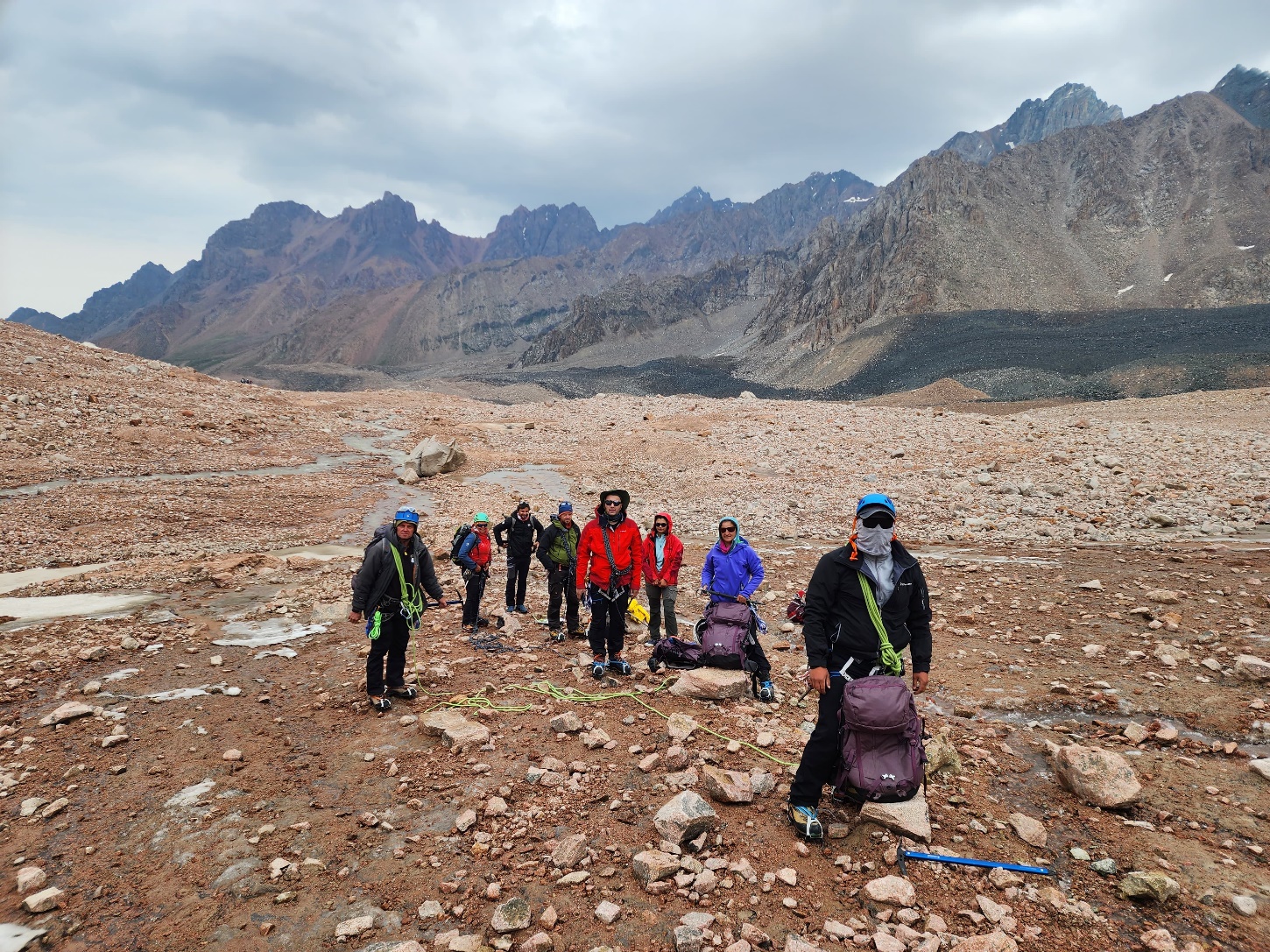
The participants of the Summer School gathered at the tongue of the Central Tuyuksu Glacier.
Then, tied together in rope teams, equipped with ice axes, wearing crampons and helmets, they ascended along the glacier tongue to an altitude of approximately 3,700 meters above sea level.
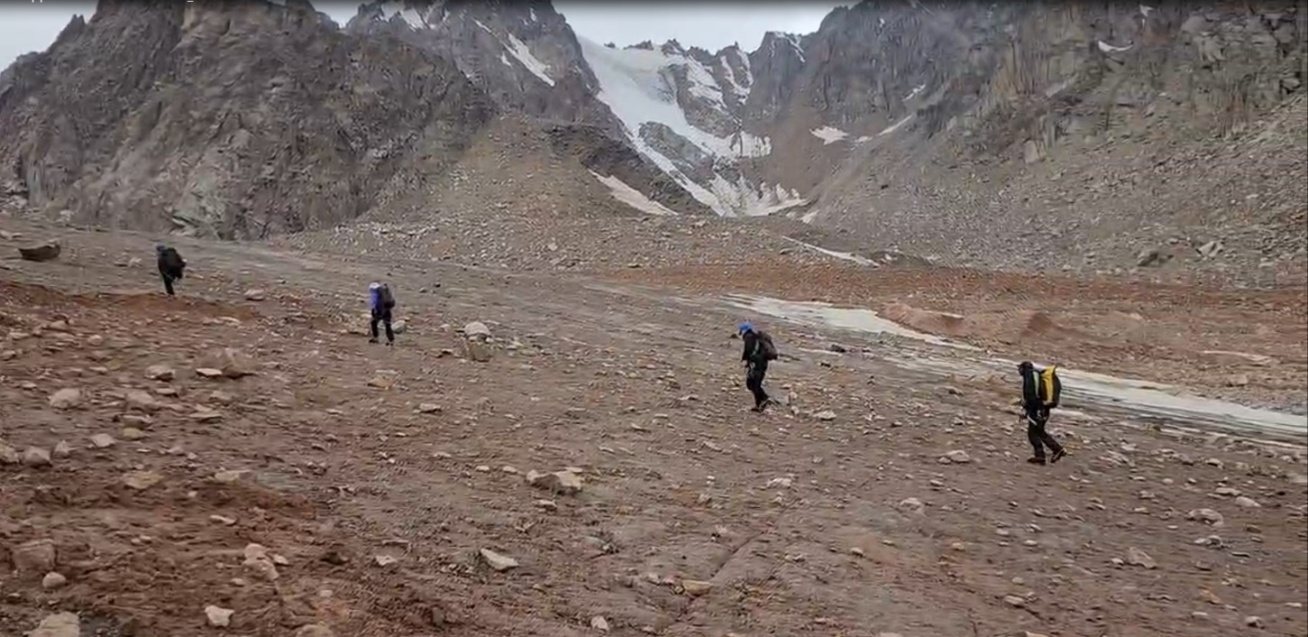
The participants of the Summer School ascended to the training site.
There, they were trained in anchoring techniques using ice screws and ropes to secure themselves to the glacier surface under challenging weather conditions (wind and a mix of rain and graupel).
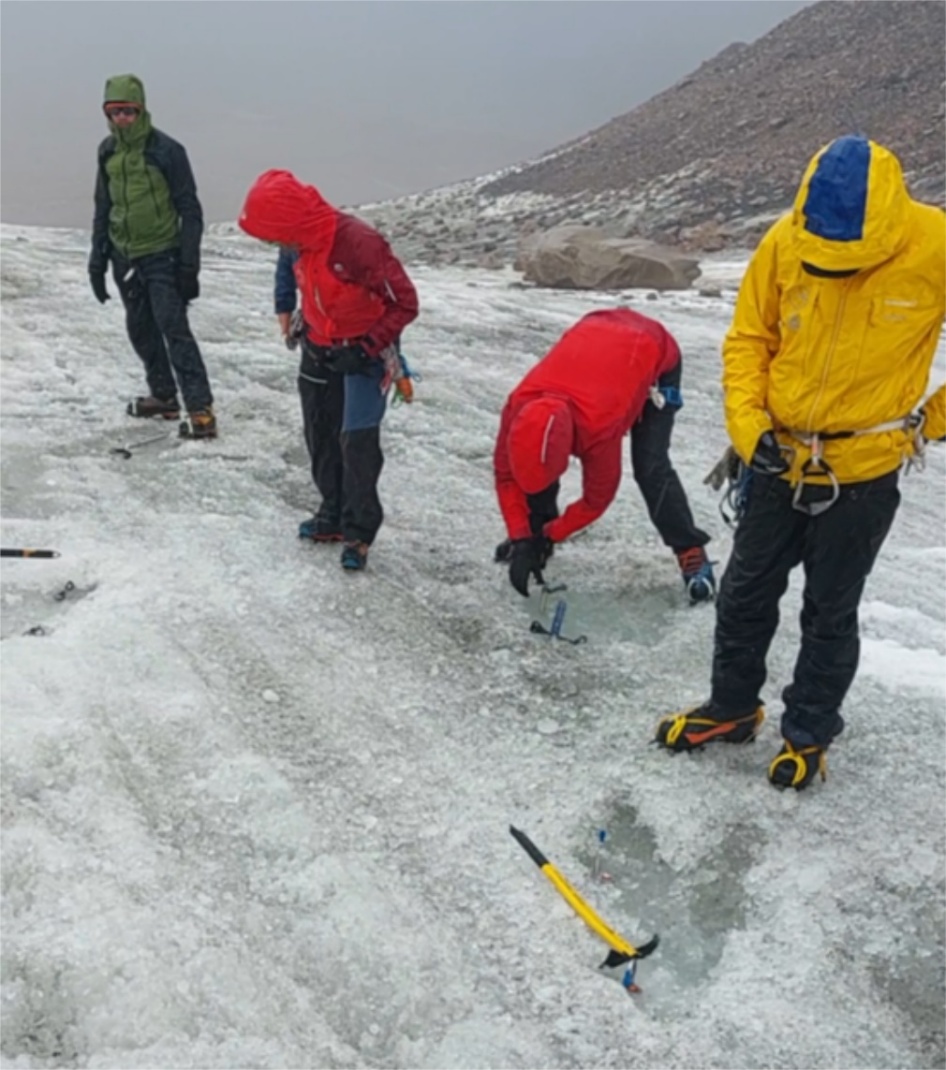
Practical Training.
On June 21, the second part of the practical training focused on rescuing individuals who had fallen into a crevasse.
First, all participants ascended the moraine separating the Central Tuyuksu Glacier and the Zoya Kosmodemyanskaya Glacier, and selected a suitable location for the exercise on a steep, nearly vertical slope.
At this site, the instructors conducted a theoretical briefing.
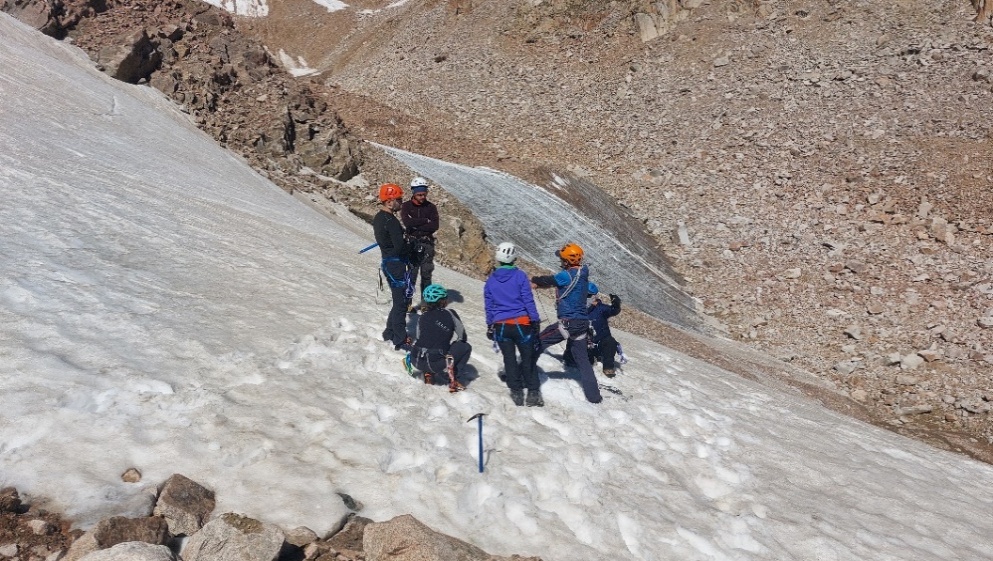
Theoretical Briefing.
After the briefing, the participants were divided into two training groups.
Each trainee first learned how to set up reliable anchor points for safety ropes using ice axes and ropes, followed by thorough strength testing of the constructed systems.
The final stage involved the actual crevasse rescue.
One by one, each participant was suspended on the slope and successfully pulled back up to the surface.
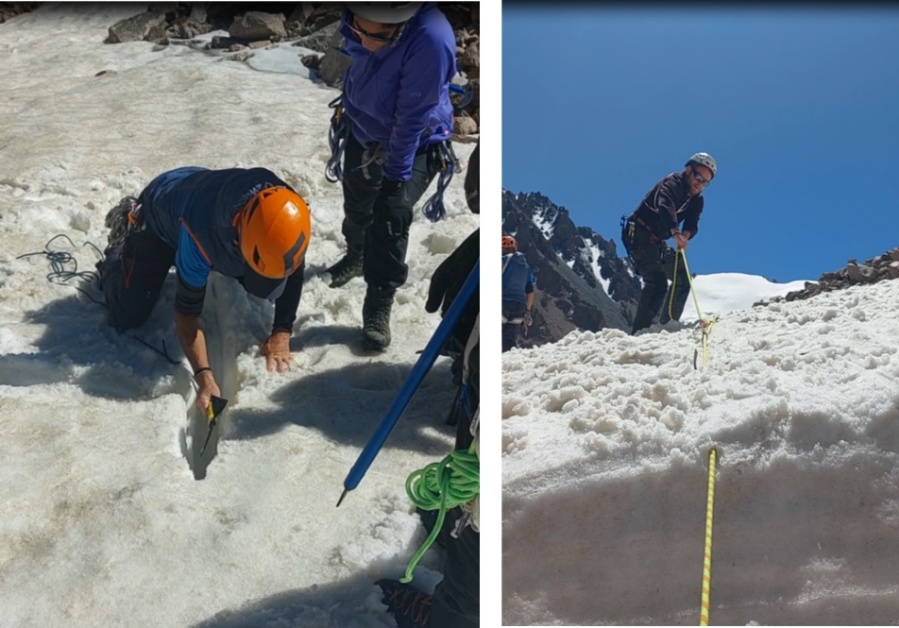
Anchor Installation and Rescue of the "Victim" from the Crevasse.
After the practical training, the instructors conducted an overview of mountaineering equipment.
They explained the types of ropes, their specific uses and service life, as well as different types of crampons, helmets, ice axes, ice screws, carabiners, and other gear.
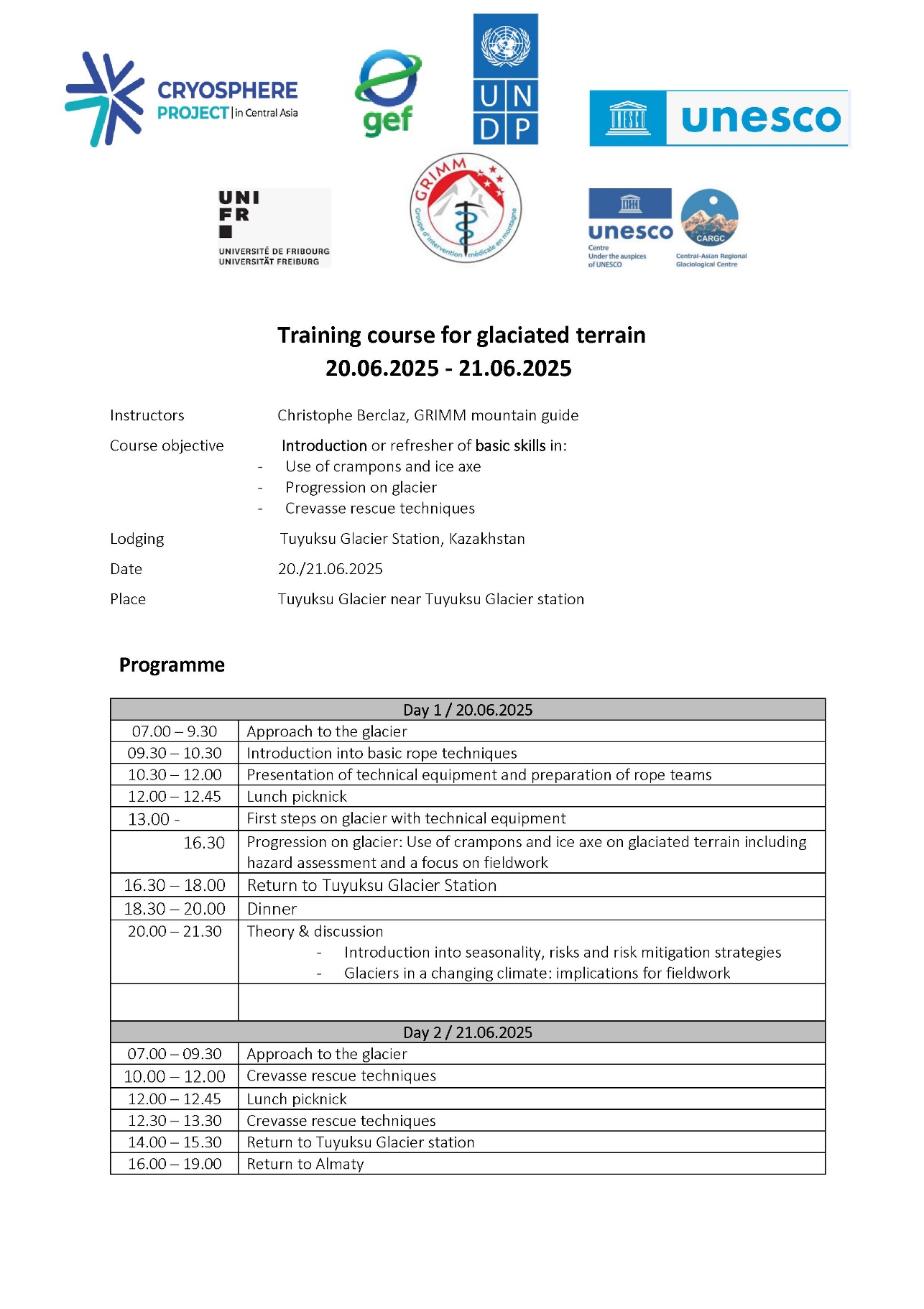
Central Tuyuksu Glacier
July 31, 2025
